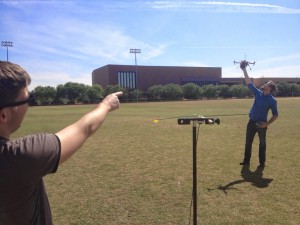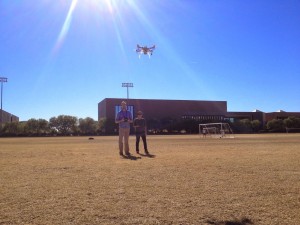
This semester I start work in earnest on a new project thats been simmering in the background, the External Calibrator for Hydrogen Observatories (ECHO) an experimental method to provide an airborne calibration source for wide-field radio arrays observing Hydrogen at cosmological distances. In particular, accurate maps of the primary beam (the response of the receiver dipoles as a function of position on the sky) have been found to be crucial at multiple stages analysis of data from PAPER/MWA/LOFAR etc but have historically been measured through indirect means such as the amplitude of satellites or radio galaxies passing overhead. ECHO aims to provide a direct measurement with a system where all parameters are under the experimenter’s control.
At this point we are designing and building our transmitter (don’t need much power for a radio telescope!) and selecting a new drone platform. We’ve hired a small team of undergraduates to take point.


This project is supported by National Science Foundation and the Bowman Low frequency Cosmology lab in the School for Earth and Space Exploration.
